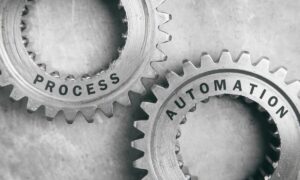Human Resource (HR) departments handle a myriad of tasks that are critical to a business’s success. From hiring and onboarding, to employee performance management, these processes can be complex and time-consuming. However, with the advent of Business Process Management (BPM) and Predictive Analytics tools, it’s now possible to streamline and enhance the efficiency of these processes. In this guide, we’ll delve into how these tools can be used to optimize HR processes, providing businesses with the agility and adaptability they need to thrive in today’s dynamic business environment.
Leveraging these tools not only saves time and resources but also reduces errors that may arise from manual processes. More importantly, it provides strategic insights that can be used to make informed decisions, potentially transforming your HR department from a cost center to a strategic partner.
Before we delve into the specifics, it’s essential to understand what BPM and Predictive Analytics are, and how they intersect in the HR landscape. BPM involves optimizing and managing business processes to enhance efficiency and effectiveness, while Predictive Analytics uses statistical algorithms and machine-learning techniques to predict future outcomes based on historical data.
Understanding HR BPM
Business Process Management (BPM) in HR involves streamlining and automating repetitive tasks to enhance efficiency and reduce errors. BPM tools allow HR teams to design, model, execute, monitor and optimize critical processes such as recruitment, onboarding, performance management, and payroll processing.
One of the main advantages of BPM in HR is that it frees up time for HR professionals to focus on strategic tasks, such as talent management and strategic planning. It also increases transparency and reduces the risk of errors that may result from manual processes.
For instance, a BPM tool like Flokzu can automate the entire recruitment process, from posting job openings, screening resumes, scheduling interviews, to issuing offer letters. HR professionals can then focus on the more strategic aspect of choosing the right candidate among the shortlisted ones.
The Power of Predictive Analytics in HR
Predictive Analytics in HR involves using data, statistical algorithms and machine learning techniques to identify future outcomes based on historical data. This can be particularly useful in predicting trends and patterns that can inform strategic HR decisions.
For example, predictive analytics can be used to predict employee turnover, performance, and engagement levels. This information can then be used to implement proactive measures to address potential issues before they become problematic.
Furthermore, predictive analytics can provide insights into the effectiveness of HR programs and policies, helping HR teams to make data-driven decisions that align with the overall business strategy.
Integrating BPM Data Analytics in HR
When talking about maximizing HR BPM efficiency, the role of bpm data analytics cannot be overstated. By analyzing the data generated through BPM tools, HR professionals can gain deeper insights into process performance and efficiency. This analysis leads to more informed decision-making and further optimization of HR processes.
BPM data analytics specifically tailors data interpretation to the understanding of business process flows, identifying bottlenecks and opportunities for improvement. For example, analyzing time-to-hire metrics can inform strategies to streamline recruitment processes or highlight successful pathways in employee onboarding.
Maximizing HR BPM Efficiency with Predictive Analytics Tools
When combined, BPM and Predictive Analytics can provide a powerful tool for HR teams to optimize their processes and make strategic decisions. Here’s how:
- Enhanced Decision-Making: Predictive analytics provides data-driven insights that can inform strategic decisions, while BPM ensures the efficient execution of these decisions. Meanwhile, bpm data analytics drives home the importance of analyzing process data to refine these strategic decisions further.
- Improved Efficiency: BPM automates repetitive tasks, freeing up time for HR professionals to focus on strategic tasks. Predictive analytics, on the other hand, can identify trends and patterns that can be used to further streamline processes. The use of bpm data analytics here is critical for continuous improvement.
- Increased Agility: The combination of BPM, predictive analytics, and bpm data analytics allows HR teams to quickly adapt to changes in the business environment, enhancing their agility.
Moreover, tools like Flokzu offer a user-friendly interface and customizable workflows, making it easy for businesses of all sizes to implement and benefit from BPM and predictive analytics. To learn more about how Flokzu can transform your HR processes with the power of bpm data analytics, check out our pricing and choose a plan that fits your business needs.
Ultimately, the goal of using BPM and Predictive Analytics in HR is not just about streamlining processes and reducing costs. It’s about transforming your HR department into a strategic partner that can contribute to your business’s success, with bpm data analytics playing a pivotal role in this transformation.
Ready to see how Flokzu can transform your HR processes with the integration of bpm data analytics? Schedule a free demo of Flokku today and start your journey towards HR process automation and optimization.






























